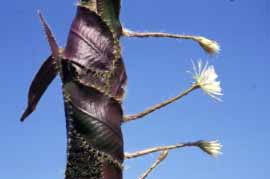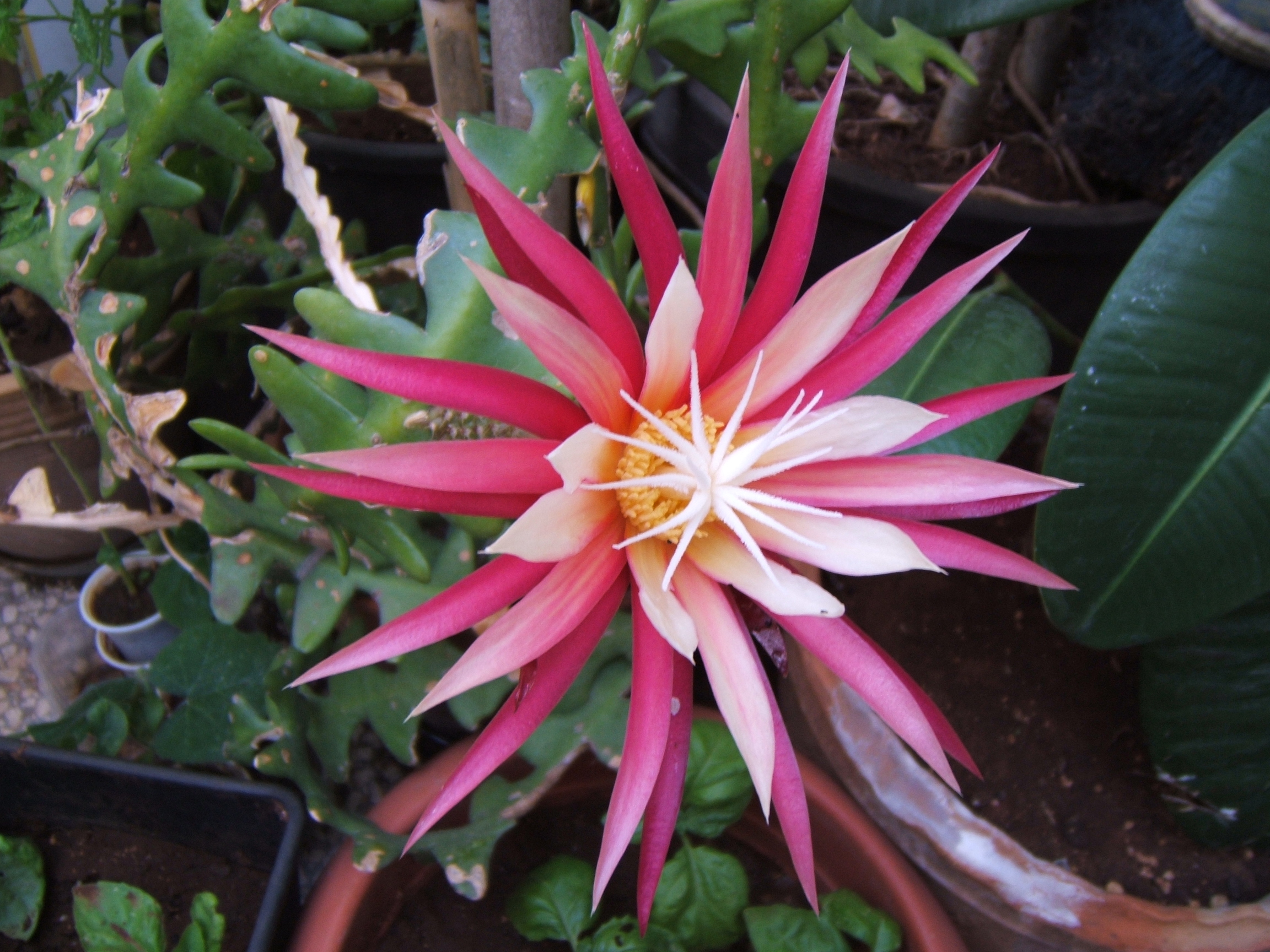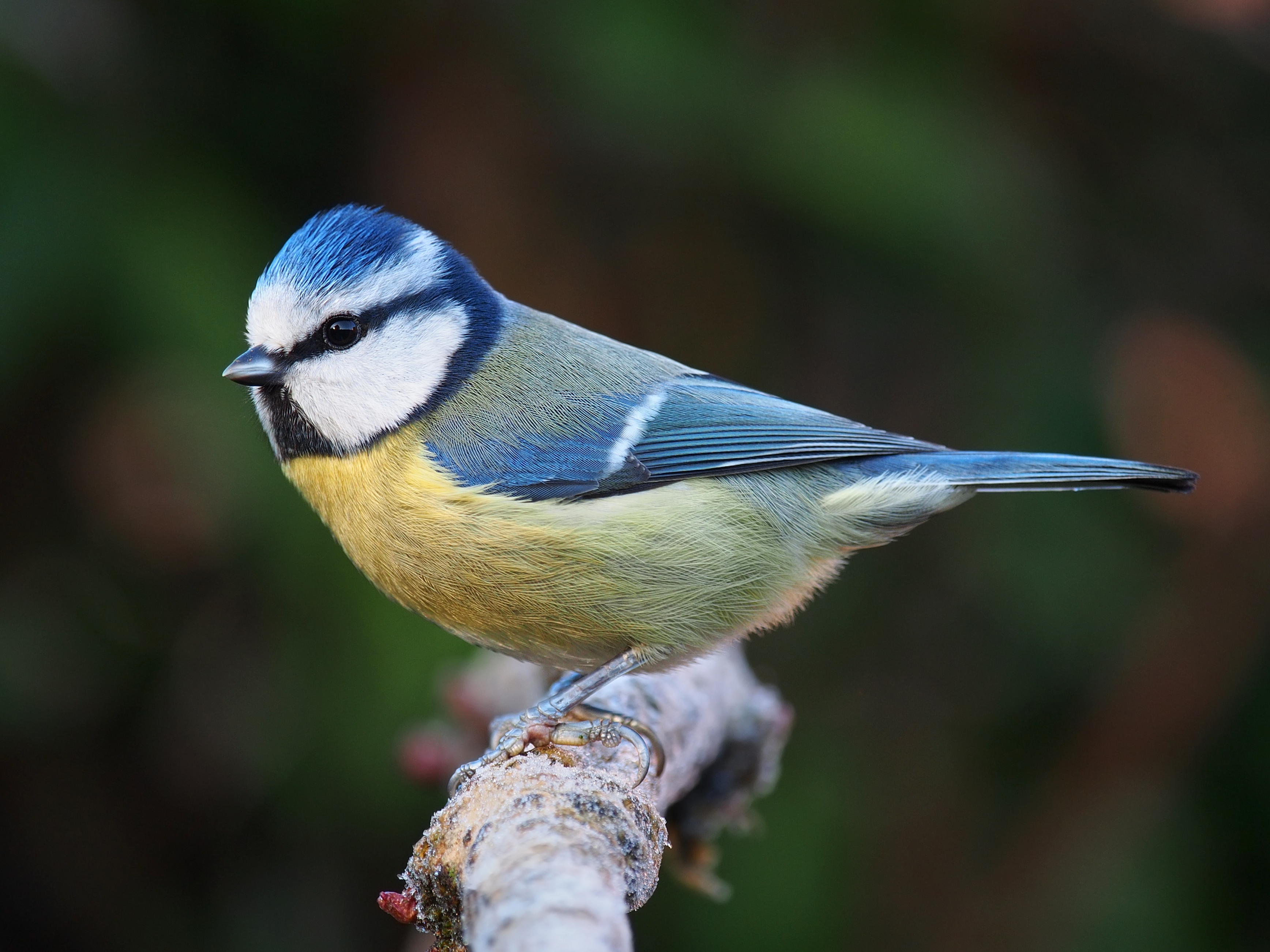|
Deamia
''Deamia'' is a genus of Cactus, cacti. Its species are native from south Mexico through Central America to Nicaragua. Its species have been placed in ''Selenicereus'' and ''Strophocactus''. Description Species of ''Deamia'' are climbing or pendent shrubs. Their flowers have hairs and spines and are followed by red fruit with clear pulp. Taxonomy The genus was erected by Nathaniel Lord Britton and Joseph Nelson Rose in 1920, with the single species ''Deamia testudo''. The name honours Charles C. Deam, a plant collector who sent the plant to Britton and Rose. It was treated as a distinct monotypic genus until 1965, when Franz Buxbaum merged it into ''Selenicereus''. Alexander Borissovitch Doweld, Alexander Doweld revived the genus in 2002, adding the species then treated as ''Selenicereus chontalensis''. Molecular phylogenetics, Molecular phylogenetic studies in 2017 (based on the two species then known) and in 2018 (three species) confirmed the monophyly of the genus. It was plac ... [...More Info...] [...Related Items...] OR: [Wikipedia] [Google] [Baidu] |
Deamia Testudo
''Deamia testudo'' is a species of flowering plant in the family Cactaceae, native from southern Mexico through Central America to Nicaragua. It was first described in 1838. It is a climber or clamberer, with long stems and large white flowers. Description ''Deamia testudo'' clambers over or hangs from rocks, or climbs or hangs from trees. It produces roots along its stems by which it clings tightly to its support. The stems are made up of segments up to long and in diameter. The stems usually have three ribs, although there may be up to eight. The ribs are thin and wing-like, about high. The areoles have up to 10 or more brownish spines, each long. The flowers have a long thin base and widely spread white tepals. Altogether the flower is about long and across. Taxonomy The species was first described by Joseph Gerhard Zuccarini in 1838, as ''Cereus testudo''. Zuccarini ascribed the scientific name to Wilhelm Friedrich Karwinsky. In 1920, Nathaniel Lord Britton and Josep ... [...More Info...] [...Related Items...] OR: [Wikipedia] [Google] [Baidu] |
Deamia Montalvoae
''Deamia montalvoae'' is a species of flowering plant in the family Cactaceae, native to southeastern Mexico, Guatemala and El Salvador. It was first described in 2018. It climbs or hangs from trees or rocks, and has large funnel-shaped flowers, mostly white, and pale red fruit, covered with bristles and hairs. Description ''Deamia montalvoae'' either climbs or is partially supported by rocks or trees, with roots along its length which do not strongly cling to its supports. It branches freely and has numerous stems, up to long and across. The stems typically have 7–8 ribs, each high. The areoles have 7–13 spines, long, which are initially yellowish with a reddish apex and later darken. In addition to spines, the areoles have many bristles. The solitary flowers are funnel-shaped, long in total. The tepals are up to long, the outer ones being yellowish-brown, the inner ones white. The style is about long with its stigma ending either at the same place as the anthe ... [...More Info...] [...Related Items...] OR: [Wikipedia] [Google] [Baidu] |
Deamia Chontalensis
''Deamia chontalensis'' is a species of flowering plant in the family Cactaceae, native to southwestern Mexico and Guatemala. It has sprawling or pendent branched stems and fragrant white flowers. Description ''Deamia chontalensis'' is either pendent or sprawling, typically growing up to or more long on rocky surfaces and rooting on the underside. The stems are made up of segments long and across. They branch at the nodes between the segments. The stems have 5–6 ribs with slightly sunken areoles bearing yellowish spines long. The very fragrant white flowers are funnel-shaped, long. They are followed by globe-shaped spiny red fruit with a diameter of . Taxonomy The species was first described by Edward Johnston Alexander in 1836, as ''Nyctocereus chontalensis''. It was later placed in the genera ''Selenicereus'' and ''Strophocactus'', but molecular phylogenetic studies in 2017 and 2018 showed that it belonged to a separate clade, and it was transferred to the revived genus ... [...More Info...] [...Related Items...] OR: [Wikipedia] [Google] [Baidu] |
Strophocactus
''Strophocactus'' is a genus of cacti in the subfamily Cactoideae. Its status and circumscription remain somewhat uncertain, with the genus containing one to three species (not always the same ones). Molecular phylogenetic data suggest that it consists of three species, including two formerly comprising the genus ''Pseudoacanthocereus''. With this circumscription, the species have different growth habits, but share similarities in their flowers, which are white and open at night. Description As circumscribed by Korotkova et al. in 2017, the three species of ''Strophocactus'' have tubular to funnel-shaped flowers with tubercules arranged in ribs and areoles with bristles. The flowers are white and open at night. They are followed by yellow to brown fruits. Two species (''S. brasiliensis'' and ''S. sicariguensis'') are scrambling or decumbent shrubs, with thin stems (up to 4.5 cm across) and tuberous roots. ''S. sicariguensis'' sometimes has flattened stem segmen ... [...More Info...] [...Related Items...] OR: [Wikipedia] [Google] [Baidu] |
Strophocactus Testudo13UE Adj
''Strophocactus'' is a genus of cacti in the subfamily Cactoideae. Its status and circumscription remain somewhat uncertain, with the genus containing one to three species (not always the same ones). Molecular phylogenetic data suggest that it consists of three species, including two formerly comprising the genus ''Pseudoacanthocereus''. With this circumscription, the species have different growth habits, but share similarities in their flowers, which are white and open at night. Description As circumscribed by Korotkova et al. in 2017, the three species of ''Strophocactus'' have tubular to funnel-shaped flowers with tubercules arranged in ribs and areoles with bristles. The flowers are white and open at night. They are followed by yellow to brown fruits. Two species (''S. brasiliensis'' and ''S. sicariguensis'') are scrambling or decumbent shrubs, with thin stems (up to 4.5 cm across) and tuberous roots. ''S. sicariguensis'' sometimes has flattened stem s ... [...More Info...] [...Related Items...] OR: [Wikipedia] [Google] [Baidu] |
Hylocereeae
The Hylocereeae are a tribe of cacti. Most are found in the tropical forests of Central and northern South America, and are climbers or epiphytes, unlike most cacti. The tribe includes between six and eight genera in different circumscriptions. The plants known as "epiphyllum hybrids" or "epiphyllums", widely grown for their flowers, are hybrids of species within this tribe, particularly ''Disocactus'', ''Pseudorhipsalis'' and ''Selenicereus'', less often ''Epiphyllum'', in spite of the common name. Description The members of the tribe are very variable in their morphology, especially when the terrestrial ''Acanthocereus'' is included. Many species form aerial roots. The hylocereoid clade (''Selenicereus'', ''Weberocereus'' and probably ''Aporocactus'') are mostly climbing or epiphytic, and have spiny ribbed stems. The phyllocactoid clade (''Epiphyllum'', ''Disocactus'', ''Kimnachia'' and ''Pseudorhipsalis'') are mainly epiphytic, and have spineless flattened leaf-like stems. F ... [...More Info...] [...Related Items...] OR: [Wikipedia] [Google] [Baidu] |
Echinocereeae
The Echinocereeae are a tribe of cactus, cacti in the subfamily Cactoideae. Since 2006, the tribe has included the former tribe Pachycereeae in many treatments of cactus classification. The exact Circumscription (taxonomy), circumscription of the tribe has been subject to considerable change, particularly since Molecular phylogenetics, molecular phylogenetic approaches have been used in determining classifications, and remains uncertain. The tribe includes large treelike species, such as the saguaro (''Carnegiea gigantea''), as well as shorter shrubby species. Most members of the tribe are found in desert regions, particularly in Mexico and the southwestern United States. Description The tribe includes large treelike species, as well as shorter shrubby species. Some species can grow to be over tall, like the saguaro (''Carnegiea gigantea'') and ''Neobuxbaumia macrocephala''. Their stems are ribbed and columnar, not divided into segments. Most have flowers that open at night. Tax ... [...More Info...] [...Related Items...] OR: [Wikipedia] [Google] [Baidu] |
Selenicereus
''Selenicereus'', sometimes known as moonlight cactus, is a genus of epiphytic, lithophytic, and terrestrial cacti, found in Mexico, Central America, the Caribbean and northern South America. The term night-blooming cereus is also sometimes used, but this is also used for many night-blooming cacti, including ''Epiphyllum'' and ''Peniocereus''. In 2017, the genus ''Hylocereus'' was brought into synonymy with ''Selenicereus''. A number of species of ''Selenicereus'' produce fruit that is eaten. The fruit, known as ''pitaya'' or ''pitahaya'' in Spanish or as dragon fruit, may be collected from the wild or the plants may be cultivated. Description Clambering plants with flat to angled stems, producing aerial roots. Areoles may be with or without spines. Flowers are large and nocturnal, pollinated by moths or rarely bats. The receptacle bears small bracts, hairs and usually spines. Fruits bear numerous spines. Flowers are generally produced in abundance with mature plants and are t ... [...More Info...] [...Related Items...] OR: [Wikipedia] [Google] [Baidu] |
Nathaniel Lord Britton
Nathaniel Lord Britton (January 15, 1859 – June 25, 1934) was an American botanist and taxonomist who co-founded the New York Botanical Garden in the Bronx, New York (state), New York. Early life Britton was born in New Dorp, Staten Island, New Dorp in Staten Island, New York to Jasper Alexander Hamilton Britton and Harriet Lord Turner. His parents wanted him to study religion, but he was attracted to nature study at an early age. He was a graduate of the School of Engineering and Applied Science (Columbia University), Columbia University School of Mines and afterwards taught geology and botany at Columbia University. He joined the Torrey Botanical Society, Torrey Botanical Club soon after graduation and was a member his entire life. He married Elizabeth Gertrude Britton, Elizabeth Gertrude Knight, a Bryophyte, bryologist, on August 27, 1885. They had met when she joined the club and were lifelong collaborators in botanical research. New York Botanical Garden During their h ... [...More Info...] [...Related Items...] OR: [Wikipedia] [Google] [Baidu] |
Joseph Nelson Rose
Joseph Nelson Rose (January 11, 1862 – May 4, 1928) was an American botanist. He was born in Union County, Indiana. His father died serving during the Civil War when Joseph Rose was a young boy. He later graduated from high school in Liberty, Indiana. He received his Ph.D. in Biology from Wabash College in 1889. having received his B.A. in Biology and M.A. Paleobotany earlier at the same institute. He married Lou Beatrice Sims in 1888 and produced with her three sons and three daughters. Rose worked for the U.S. Department of Agriculture and became an assistant curator at the Smithsonian in 1896. While Rose was employed by the national museum, he was an authority on several plants families, including Apiaceae (Parsley Family) and Cactaceae (Cactus Family). He made several field trips to Mexico, and presented specimens to the Smithsonian and the New York Botanical Garden. With Nathaniel Lord Britton, Rose published many articles on the Crassulaceae. He took a leave of abs ... [...More Info...] [...Related Items...] OR: [Wikipedia] [Google] [Baidu] |
Franz Buxbaum
Franz Buxbaum (25 February 1900, Liebenau, Graz – 7 February 1979) was an Austrian botanist, specialising in cacti. ''Neobuxbaumia ''Cephalocereus'' is a genus of slow-growing, columnar-shaped, blue-green cactus, cacti. The genus is native to Mexico. Description These cacti show a columnar and upright growth habit, and may be branched or unbranched reaching heights of 10 t ...'' is named after him. References Scientists from Graz 1900 births 1979 deaths 20th-century Austrian botanists {{Austria-botanist-stub ... [...More Info...] [...Related Items...] OR: [Wikipedia] [Google] [Baidu] |
Species
In biology, a species is the basic unit of classification and a taxonomic rank of an organism, as well as a unit of biodiversity. A species is often defined as the largest group of organisms in which any two individuals of the appropriate sexes or mating types can produce fertile offspring, typically by sexual reproduction. Other ways of defining species include their karyotype, DNA sequence, morphology, behaviour or ecological niche. In addition, paleontologists use the concept of the chronospecies since fossil reproduction cannot be examined. The most recent rigorous estimate for the total number of species of eukaryotes is between 8 and 8.7 million. However, only about 14% of these had been described by 2011. All species (except viruses) are given a two-part name, a "binomial". The first part of a binomial is the genus to which the species belongs. The second part is called the specific name or the specific epithet (in botanical nomenclature, also sometimes i ... [...More Info...] [...Related Items...] OR: [Wikipedia] [Google] [Baidu] |





